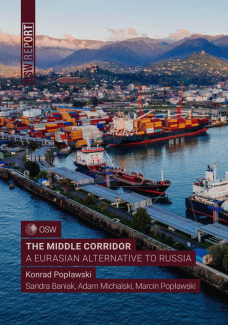The Middle Corridor

Russia’s invasion of Ukraine, which has now been ongoing for almost two years, is not only leading to significant political re-evaluations, but is also bringing with it significant transformations in Eurasian transport routes. One of the biggest beneficiaries of this process is the Middle Corridor, which bypasses Russia. It runs from China through Central Asia, the Caspian Sea, the South Caucasus and then one of several branches leads directly into the EU. Prior to February 2022, this route was being developed by the transit countries, but they did not have the know-how, financial resources or political support from external actors which was needed. After the Russian invasion, there has been a significant increase in getting involved in the Middle Corridor – not just from the EU or the US, but also from Beijing and global logistics corporations. It will have potentially significant consequences for the South Caucasus and Central Asian states in particular.
This report examines the potential for the development of the Middle Corridor, analyses the positions of the various actors involved, and describes the long-term political implications of making the route more efficient.




